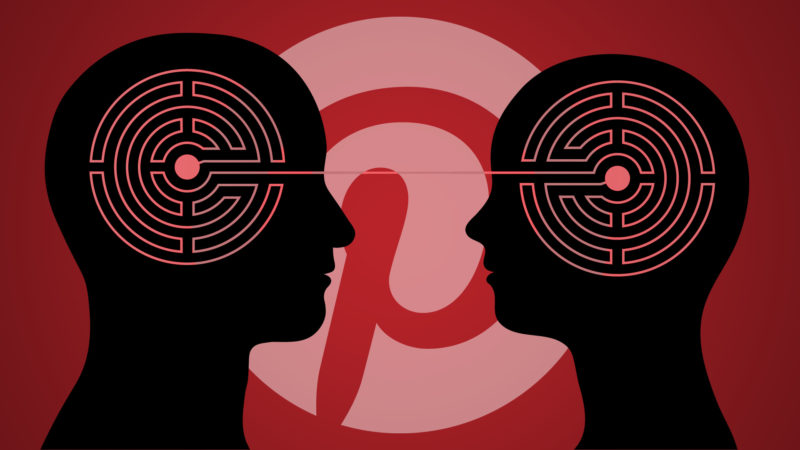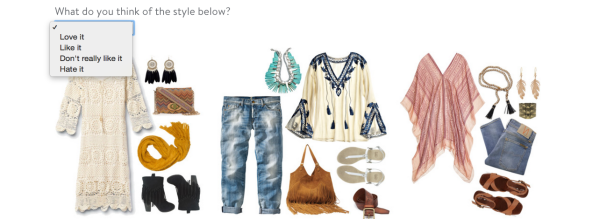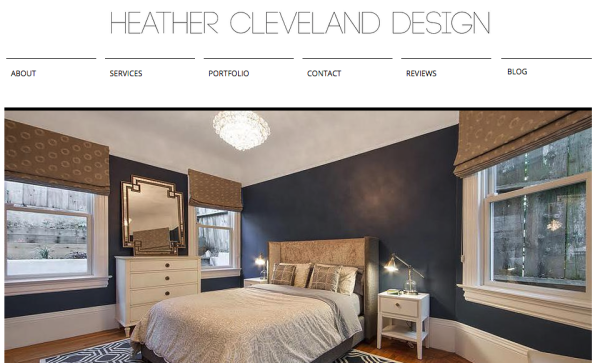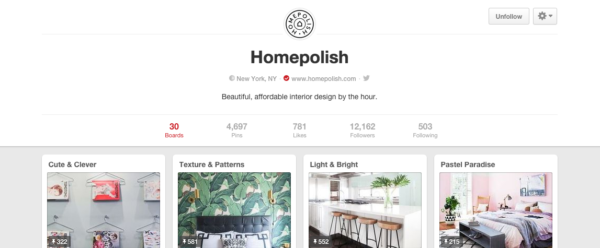How 3 Businesses Use Pinterest To Learn What Their Customers Covet
By asking new customers to share Pinterest links, Stitch Fix, Homepolish and Heather Cleveland Design gain insight they couldn't get without the social bookmarking service.
Stitch Fix needs to know its customers well. Intimately well. Well enough to negotiate the tricky business of picking clothes for strangers without any face-to-face contact.
To start the introduction, Stitch Fix asks new customers to fill out a detailed online survey to determine whether they prefer bohemian chic, casual chic, classic, preppy or glamorous. Polka dots or stripes? Plaid or paisley? Both? Neither? “Are you more of a jeans/pants and top gal or a dresses gal?”
At the end of the survey, Stitch Fix calls upon its secret weapon: Pinterest. Including a link to a Pinterest account or board is optional but it’s an option that Stitch Fix covets highly.
“We probably would consider it the No. 1 most helpful thing that our clients can do for us is to give us access to their Pinterest board,” Stitch Fix CEO Katrina Lake told Marketing Land. “It allows us to see what they have been coveting.”
For Stitch Fix, Pinterest is much more than a marketing tool. Yes, the company has 145,000 followers on Pinterest, but Lake says, Stitch Fix doesn’t think much about it as platform for marketing. Stitch Fix hasn’t spent any money on Promoted Pins, Pinterest’s fledgling ad product, and Lake said it doesn’t gather much useful data from Pinterest’s business analytics dashboard.
“We don’t really think of it like advertising or commerce,” Lake said. “For us it’s just this tool.”
That speaks to Pinterest’s unique place in the social media environment. For millions of people — the privately held company doesn’t reveal monthly active users, but it had 75 million unique U.S. visitors in January, according to comScore — Pinterest is a forum for discovery and intent. And Stitch Fix isn’t the only company taking advantage of that.
Heather Cleveland Design: “It Makes Me Look Really Good At My Job”
Heather Cleveland Design is a case in point. The Bay Area home design company has been using Pinterest for the last several years to improve the efficiency of consultations.
Before owner Heather Cleveland started using Pinterest, she had to spend more time trying to get on the same page as clients, searching for a common design vocabulary. One person’s modern can be another’s contemporary. She would interview potential clients on the phone and ask them to send her design examples clipped from print magazines.
Cleveland said she used to find herself dumping about half of the suggestions she brought to initial consultations. Now with Pinterest, 80-90% of her ideas are hitting the sweet spot, allowing her to devote more time on design and less time playing detective. “Now I’m doing mini-tweaks and edits,” she said. “At $150 a hour that’s a lot of hours that are being saved. Those hours can be applied to doing more intensive design and my clients get a better value in the end.”
Cleveland said Pinterest’s potential was quickly apparent the first time she asked potential clients to share a board of design favorites.
Within 10 pictures, Cleveland had figured out the clients’ preferred style plus she noticed that there was a breakfast nook in nearly all the Pins. The clients hadn’t mentioned wanting a breakfast space, but were delighted when Cleveland proposed including one in the design.
“They were appalled at how brilliant I was, itsti was like ‘How could you know that kind of a thing,’” Cleveland said. “So I realized, ‘Oh, this is a really great way for me to burrow down in really quick and get the aesthetic of a new client and also a way for me to really shine.’
“It makes me look like I’m really good at my job if I can ferret out your aesthetic without really ever having talked to you except on the phone for 10 minutes.”
Homepolish Hopes For A More Open Pinterest API
Homepolish, a New York City-based startup that matches people with interior designers, also asks new customers to share Pinterest links.
“Pinterest is all about categorization,” Homepolish co-founder and chairman Will Nathan said, “and thinking holistically and bringing together all the different elements from the Internet. So it’s a natural choice when someone wants to put together their dream space.”
But Nathan wishes Pinterest would open its API to allow more integration with third-party sites. He’d like to be able to offer Pinterest authentication as part of the Homepolish on-boarding process, and give people, for example, the ability to pull up their Pin boards and select images that represent their style.
Nathan said Homepolish derives value from studying clients’ Pinterest links, but could do much more with deeper access to Pinterest data.
“Something that the designers and clients could collaborate with,” Nathan said. “For products, for inspiration, for rooms. Once you have the data you can start to create interesting tools like recommending what products they might like or what rooms they might like.
“But Pinterest puts up a pretty big wall as far as capturing that data, which is unfortunate because the clients definitely want it.”
Nathan said Pinterest has also been valuable to Homepolish for traditional marketing purposes. About a year ago, the company revamped its Pinterest boards to focus on different emotions — Cute & Clever, Love Where You Work, Dark & Dramatic — and started pinning design ideas not exclusively created by Homepolish designers.
“It’s dramatically increased our engagement,” Nathan said. “The number of repins, followers and referral traffic have all increased. I think that people are looking to Homepolish not just as a portfolio but as a voice for home design.”
30% Better Results When Stitch Fix Clients Use Pinterest
Stitch Fix also uses Pinterest to gather fashion intelligence. Its stylists use private Pinterest boards to share styles that are trending among customers. That gives the company’s buyers notice about what people might want to purchase six months down the line.
Are people pinning herringbone? Are sequined shoulders and elbow patches hot right now? Yes, or they were. Stitch Fix stylists noticed a sequin trend on Pinterest early last year, so the company stocked up for the holiday season.
“We actually can use what people are coveting on Pinterest to inform our buying and help inform our development cycle too,” Lake said.
But Stitch Fix gets the most value from Pinterest from the links its customers share. Stitch Fix’s 1,400 stylists are aided by an algorithm in picking the five items to send to clients who only pay for the clothing or accessories they don’t return.
Lake said there’s really nothing better than Pinterest links to provide that insight. The company also gives new customers the option to include Twitter and LinkedIn profiles but Pinterest is the option overwhelmingly preferred by stylists. Stitch Fix says its picks for clients in 2014 were 30% more efficient when Pinterest was involved.
“Pinterest, for a lot of people, can be like the equivalent of logging when somebody’s walking through a mall, like ‘Oh, that’s cute, Oh, that’s cute,'” Lake said.
“It’s like really just logging the synapses that are firing in someone’s brain when they have an affinity for a product. There’s really no other way that we could get at that.”
Opinions expressed in this article are those of the guest author and not necessarily MarTech. Staff authors are listed here.
Related stories
New on MarTech



